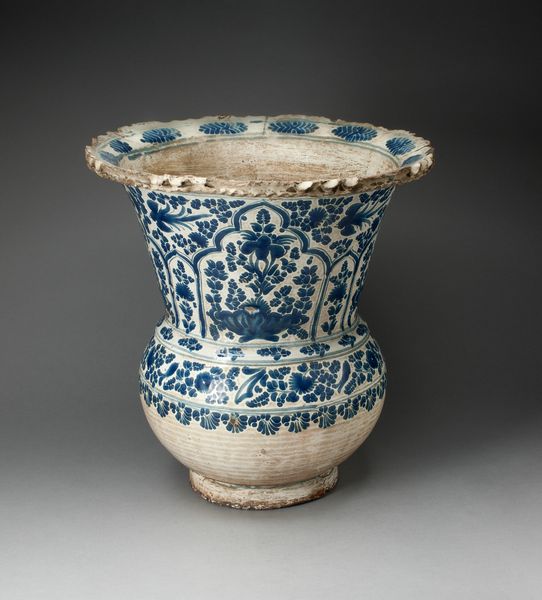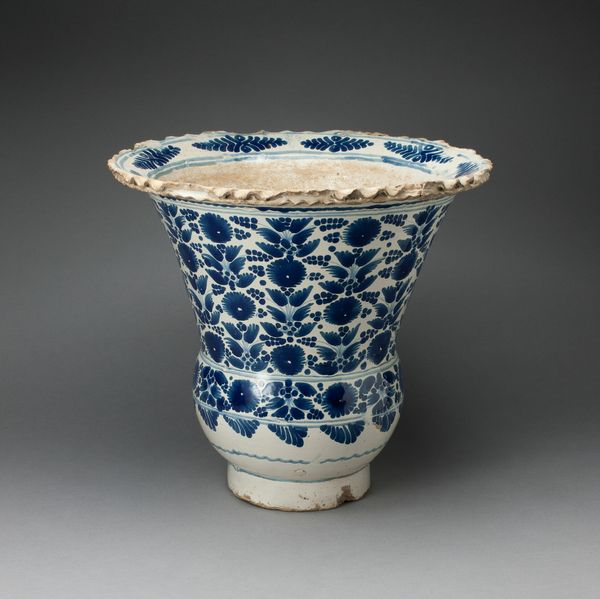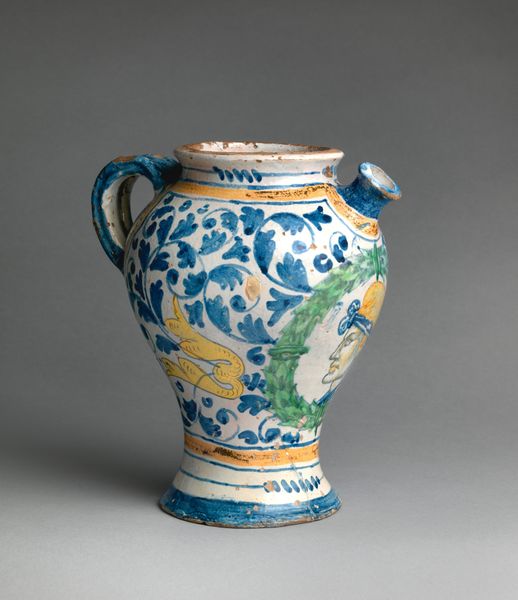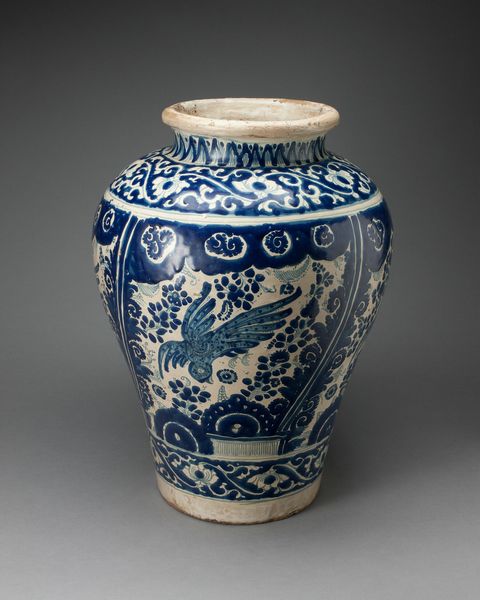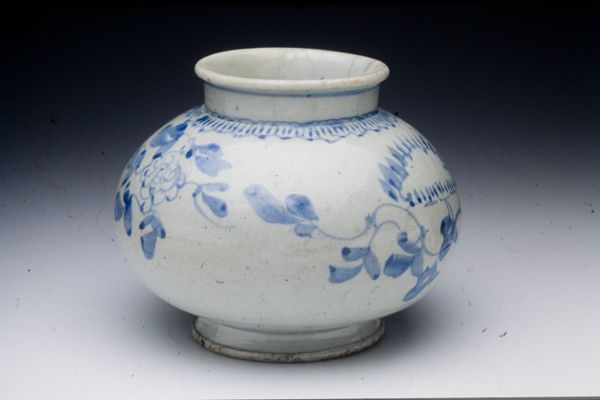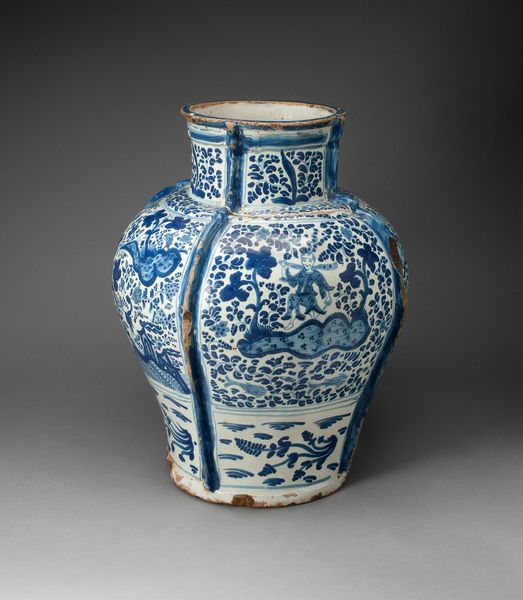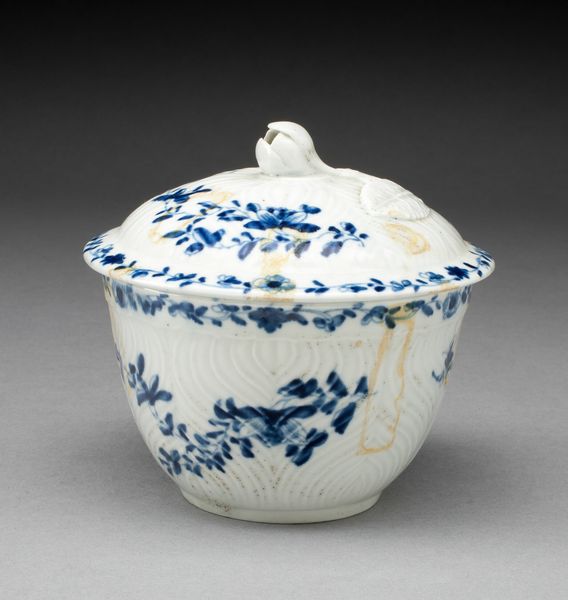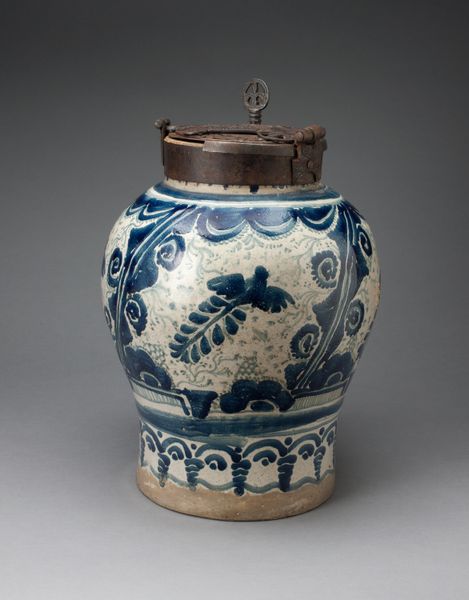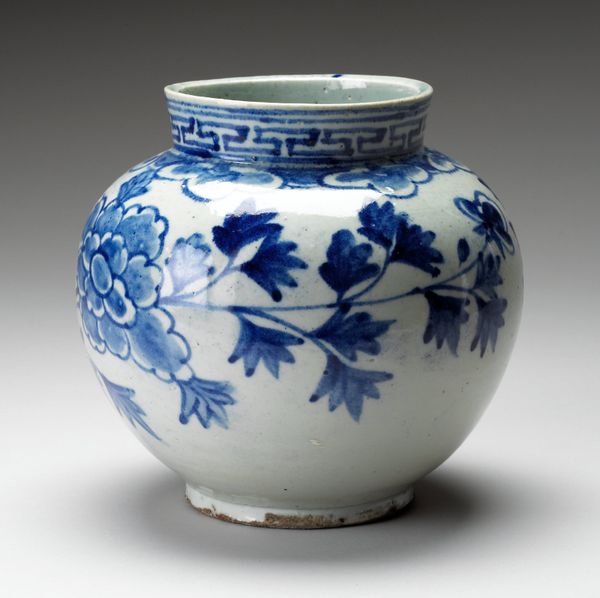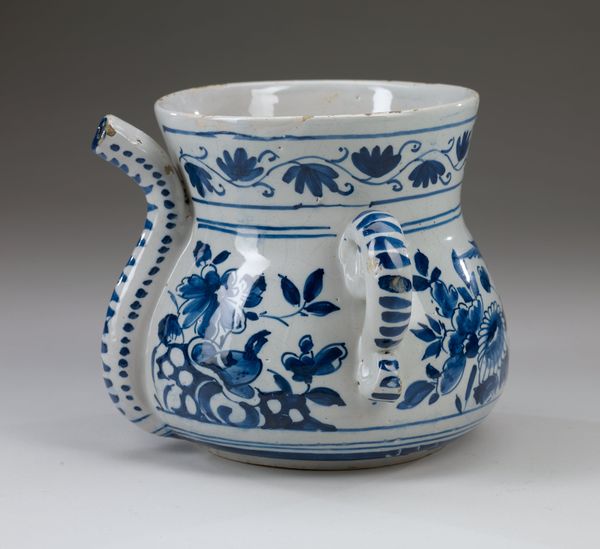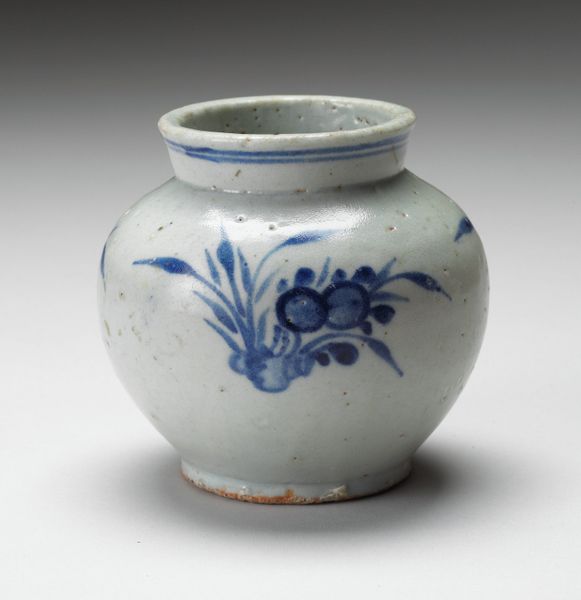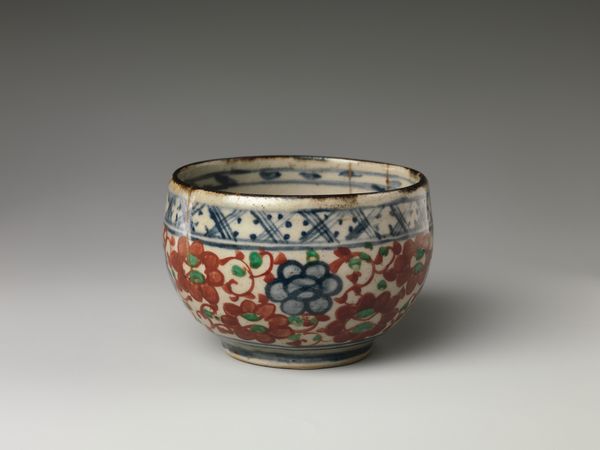
Dimensions: H. 31 cm (12 3/16 in.)
Copyright: Public Domain
This ceramic Jardinière was made in Puebla, Mexico, by Talavera Poblana. Talavera pottery is a Mexican and Spanish tradition, but it’s also a global story of cultural exchange. Its origins lie in 16th-century Spain, where the city of Talavera de la Reina became known for its ceramics. As in Mexico, pottery production was shaped by social and economic factors. Guilds regulated production, and styles were influenced by religious and aristocratic patrons. The Spanish brought their techniques to Mexico, where they merged with indigenous artistic traditions. Puebla became a major center for Talavera production in Mexico, the industry fueled by the abundance of local clay and the demand for decorative and functional wares in the growing Spanish colony. The blue-and-white palette of this piece reflects both Spanish and Asian influences, as Chinese porcelain was highly prized during this period. To truly understand this Jardinière, we can trace the movement of goods, people, and ideas across continents. Investigating archival documents such as guild records and trade inventories, in addition to the object itself, we can understand art's global journey.
Comments
No comments
Be the first to comment and join the conversation on the ultimate creative platform.
